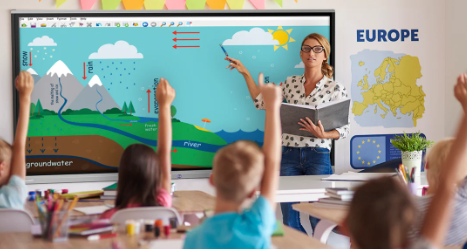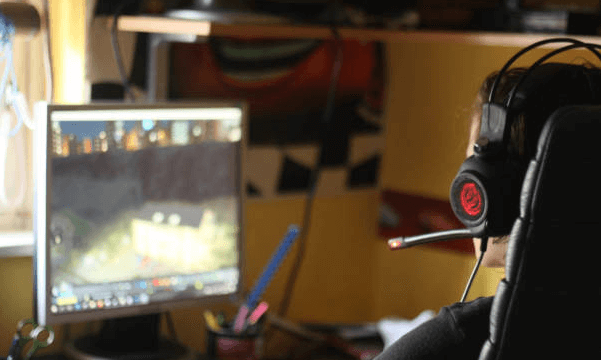As the landscape of education continues to evolve, technology is playing an increasingly pivotal role in shaping the classroom of the future. Among the most transformative innovations are interactive flat panels, which are quickly becoming a cornerstone of modern education. These advanced tools are not just enhancing the way educators teach; they are redefining the entire learning experience. As schools look to integrate the best interactive flat panels for education, it is clear that these devices are leading the way in creating more dynamic, engaging, and effective learning environments.
1. Interactive Flat Panels: A Game-Changer in Education
Interactive flat panels (IFPs) are more than just digital whiteboards. They are powerful, multi-functional tools that combine the best features of touchscreens, high-definition displays, and interactive software to create an immersive learning experience. Unlike traditional teaching tools, interactive flat panels offer a range of functionalities that cater to different learning styles and needs, making them an essential asset in any modern classroom.
For example, the best interactive flat panel for education come equipped with features like multi-touch capabilities, allowing multiple students to interact with the screen simultaneously. This fosters collaboration and encourages active participation, which are crucial for deeper learning. Additionally, these panels often include built-in educational software that enables teachers to create and deliver lessons in a more interactive and engaging manner, whether through real-time quizzes, interactive simulations, or multimedia presentations.
2. Enhancing Student Engagement and Learning Outcomes
One of the most significant benefits of interactive flat panels is their ability to enhance student engagement. In today’s digital age, students are accustomed to interacting with technology in their daily lives. Incorporating interactive flat panels into the classroom bridges the gap between students’ digital experiences outside of school and their learning experiences within it.
Interactive flat panel make lessons more engaging by incorporating multimedia elements such as videos, animations, and interactive simulations. These elements capture students’ attention and make complex concepts easier to understand. For instance, in a science class, an interactive flat panel can be used to display 3D models of molecules or the human body, allowing students to explore these structures in detail. This hands-on interaction not only makes learning more enjoyable but also helps to reinforce key concepts, leading to better retention and understanding.
3. Supporting Inclusive and Personalized Learning
In addition to enhancing engagement, interactive flat panels also support inclusive and personalized learning. The ability to customize lessons to meet the diverse needs of students is a critical aspect of modern education. Interactive flat panels enable teachers to tailor their instruction to accommodate different learning styles, paces, and abilities.
For example, teachers can use interactive flat panels to create lessons that include a mix of visual, auditory, and kinesthetic activities. This ensures that all students, regardless of their preferred learning style, can engage with the material in a way that suits them best. Furthermore, interactive flat panels often come with accessibility features, such as adjustable font sizes and color contrasts, making them ideal for students with visual impairments or other special needs.
The best interactive flat panels for education also support personalized learning by allowing students to work at their own pace. Teachers can assign interactive exercises that students can complete individually on the panel, receiving instant feedback and adjusting their approach as needed. This self-paced learning model is particularly beneficial for students who need extra time to grasp certain concepts, as it provides them with the opportunity to learn without the pressure of keeping up with the rest of the class.
4. Facilitating Collaboration and Communication
Collaboration and communication are key skills in today’s interconnected world, and interactive flat panels are designed to foster these abilities in the classroom. With features like multi-user interaction and cloud connectivity, interactive flat panels make it easy for students to collaborate on projects, share ideas, and communicate with their peers.
In group activities, students can use the interactive flat panel to work together on a shared task, such as brainstorming ideas for a project or solving a complex problem. The ability to interact with the screen simultaneously encourages teamwork and ensures that every student has the opportunity to contribute. Moreover, interactive flat panels often include tools for sharing content between devices, making it easy for students to present their work to the class or collaborate with peers remotely.
These collaborative capabilities are not only beneficial for students but also for teachers, who can use the interactive flat panel to share resources, track student progress, and provide real-time feedback. This creates a more interactive and responsive classroom environment, where communication flows freely between teachers and students.
5. Preparing Students for the Future
As the world becomes increasingly digital, it is essential that students are equipped with the skills and knowledge they need to succeed in the future. Interactive flat panels play a crucial role in this preparation by providing students with opportunities to develop digital literacy and critical thinking skills.
Using interactive flat panels, students learn how to navigate digital tools, analyze information, and solve problems in a technology-rich environment. These skills are not only important for academic success but also for future careers, where the ability to work with technology will be a key requirement.
Moreover, the best interactive flat panels for education are designed to be future-proof, with features that can be updated and expanded as technology evolves. This ensures that schools can continue to provide students with cutting-edge tools and resources, preparing them for the challenges and opportunities of the 21st century.
Conclusion
Interactive flat panels are leading the way in transforming classroom dynamics, offering a range of benefits that enhance student engagement, support personalized learning, and foster collaboration. As schools look to the future, investing in the best interactive flat panels for education will be essential in creating a modern, effective, and inclusive learning environment. By integrating these advanced tools into the classroom, educators can provide students with the skills and experiences they need to thrive in an increasingly digital world.







